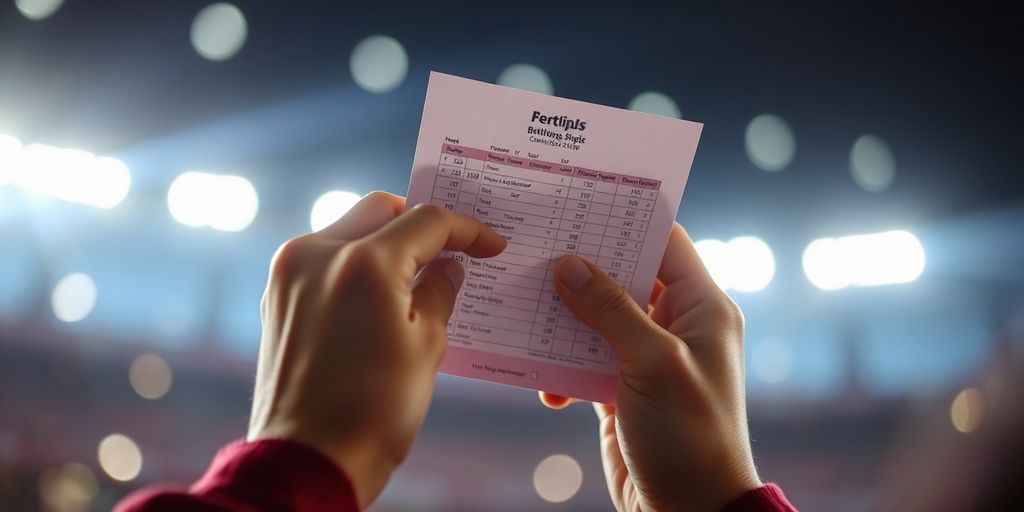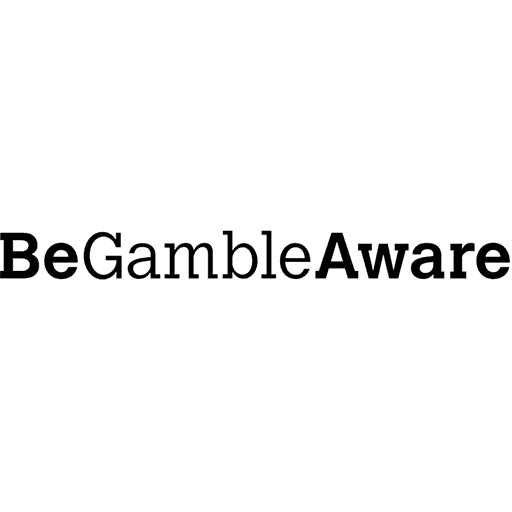If you’re into sports betting, especially in-game, understanding how live bet odds work is a must. It’s not just about picking a winner; it’s about knowing what those numbers mean and how they change as the game goes on. This guide will help you make sense of live bet odds so you can place smarter bets and hopefully, win more often.
Key Takeaways
- Knowing how odds work is super important for successful sports betting.
- Odds can look different depending on where you’re betting, but they all mean the same thing.
- You can use the odds to figure out how likely an event is to happen.
- Live bet odds change fast based on what’s happening in the game, like scores or injuries.
- Don’t chase losses and always manage your money wisely when live betting.
Understanding Live Bet Odds Fundamentals
Alright, so you’re getting into live betting? Awesome! First things first, you gotta get a handle on the basics. It’s like learning the alphabet before writing a novel. Understanding how odds work is the key to figuring out which bets are worth taking. Let’s break it down so it’s not like trying to decipher ancient hieroglyphics.
What Do the Plus and Minus Mean in Sports Betting?
Okay, so you see those plus (+) and minus (-) signs all over the place? They’re not just there to look confusing. In American odds, the minus sign shows you how much you need to bet to win $100. For example, if you see -150, that means you gotta bet $150 to win $100. The plus sign, on the other hand, shows you how much you’ll win if you bet $100. So, +200 means you’d win $200 on a $100 bet. Easy peasy, right?
How Odds Impact Payouts
Think of it this way: the bigger the odds against a team, the more money you stand to win. It’s all about risk and reward. If a team is a huge underdog, their odds will be high, and your payout will be bigger if they pull off an upset. Conversely, if a team is heavily favored, their odds will be lower, and your payout will be smaller. It’s pretty straightforward once you get the hang of it. For example, 7 to 2 odds mean that for every $2 you wager, you could win $7 if your bet is successful. Understanding sports betting odds is really important.
Calculating Implied Probability
Okay, this might sound a little intimidating, but stick with me. Implied probability is basically what the odds suggest the chance of something happening is. You can figure it out from the odds. For American odds, if it’s a negative number (like -150), you do: 150 / (150 + 100) = 60%. If it’s a positive number (like +200), you do: 100 / (200 + 100) = 33.33%. This helps you see if the odds are actually worth betting on. It’s all about finding value, and it’s a key to placing smart bets.
Understanding implied probability is super important because it helps you make smarter choices. It’s not just about picking who you think will win; it’s about figuring out if the odds are in your favor. If the implied probability is lower than what you believe the actual chance of winning is, then you might have found a good bet.
Here’s a quick rundown:
- American Odds: Use the formulas above.
- Decimal Odds: 1 / Decimal Odds = Implied Probability.
- Fractional Odds: Denominator / (Denominator + Numerator) = Implied Probability.
Knowing how to calculate this will really help you find the top sportsbooks and make better bets.
Decoding American Moneyline Odds
American moneyline odds are super common, especially if you’re betting in the US. They might look a little weird at first, but once you get the hang of them, they’re pretty straightforward. Basically, they tell you who the favorite and underdog are, and how much you stand to win (or need to bet to win a certain amount).
Identifying Favorites and Underdogs
Okay, so the first thing to know is that American odds use plus (+) and minus (-) signs. The minus sign always indicates the favorite, while the plus sign indicates the underdog. For example, if you see a team listed at -150, they’re the favorite. If another team is at +200, they’re the underdog. Easy peasy.
Betting on the Moneyline Explained
When you’re betting on the moneyline, you’re simply picking who you think will win the game outright. No point spreads or anything like that. Just a straight-up win or lose. The odds tell you how much you’ll get paid out if you’re right. It’s a simple way to get started with NFL betting odds.
Calculating Winnings with Moneyline Odds
This is where it gets a little math-y, but don’t worry, it’s not too bad. For favorites (the ones with the minus sign), the number tells you how much you need to bet to win $100. So, if a team is at -150, you need to bet $150 to win $100 (plus get your original $150 back). For underdogs (the ones with the plus sign), the number tells you how much you’ll win if you bet $100. So, if a team is at +200, you’ll win $200 if you bet $100 (plus get your original $100 back). Here’s a quick table:
| Odds | What it Means |
|---|---|
| -110 | Bet $110 to win $100 |
| +150 | Bet $100 to win $150 |
| -200 | Bet $200 to win $100 |
| +300 | Bet $100 to win $300 |
Remember that sportsbooks always have a little built-in profit margin, often called the "vig" or "juice". This means the implied probabilities of all outcomes in an event will add up to more than 100%. It’s how they make their money, so it’s important to factor that into your betting system.
Exploring Decimal Odds in Live Betting
Decimal odds are popular because they’re straightforward. You’ll find them used a lot in Europe, Australia, and Canada. They show you exactly how much you’ll get back for every dollar you bet, making it super easy to figure out your potential payout. Let’s get into the details.
Decimal Odds Explained
Decimal odds tell you the total return you’ll receive for every $1 wagered, including your stake. This makes them pretty simple to understand at a glance. For example, if you see odds of 2.50, it means you’ll get $2.50 back for every $1 you bet. No need to add your stake back in – it’s already included. This is different from American odds, where you have to do a little extra math to figure out the total payout. Understanding sports odds is key to successful betting.
Calculating Winnings with Decimal Odds
Calculating your winnings with decimal odds is really easy. Just multiply your stake by the decimal odds. The result is the total payout you’ll receive. To find your profit, subtract your original stake from that total payout. Here’s the formula:
Total Payout = Stake x Decimal Odds
Profit = Total Payout – Stake
For example, let’s say you bet $20 on a team with decimal odds of 3.00. Your total payout would be $20 x 3.00 = $60. Your profit would be $60 – $20 = $40. See? Simple!
Calculating Implied Probability with Decimal Odds
Implied probability is the chance of an outcome happening, according to the odds. To calculate implied probability with decimal odds, you use this formula:
Implied Probability = 1 / Decimal Odds
So, if a team has decimal odds of 2.00, their implied probability of winning is 1 / 2.00 = 0.50, or 50%. A lower decimal number means a higher probability. This helps you assess the betting odds and whether they reflect the true chances of an event. It’s a useful tool for making informed decisions. For example, you can use mobile betting apps to quickly calculate implied probability while live betting.
Understanding implied probability is important because it helps you determine if there’s value in a bet. If you think a team has a better chance of winning than the implied probability suggests, it might be a good bet. However, remember that sportsbooks build a margin into the odds, so the total implied probability for all outcomes will always be over 100%.
Navigating Fractional Odds for In-Game Wagering
Fractional Odds Explained
Fractional odds, also known as British odds or UK odds, are common, especially in horse racing. They look like this: 5/2, 1/4, etc. The key is understanding what these numbers represent. The number on the left shows how much you could win relative to the amount you bet, which is the number on the right. So, if the odds are 5/2, you could win $5 for every $2 you wager.
Understanding Payouts with Fractional Odds
Calculating payouts with fractional odds is pretty straightforward once you get the hang of it. Let’s say you bet $10 on odds of 3/1. This means you’d win $30 (3 x $10) and get your original $10 back, for a total payout of $40. Here’s another example:
- Odds: 7/2
- Bet: $20
- Winnings: (7/2) * $20 = $70
- Total Payout: $70 (winnings) + $20 (stake) = $90
It’s important to remember that fractional odds show your potential profit, not the total return. Always add your initial stake back in to calculate the full payout.
Comparing Fractional to Other Odds Formats
Fractional odds can seem confusing if you’re used to decimal or American odds. Here’s a quick comparison:
- Fractional: 1/1 (Evens) = Decimal: 2.0 = American: +100
- Fractional: 1/2 = Decimal: 1.5 = American: -200
- Fractional: 2/1 = Decimal: 3.0 = American: +200
Converting between these formats helps you compare odds across different sportsbooks and find the best value. To convert fractional odds to decimal, divide the left number by the right number and add 1. For example, 5/2 becomes (5/2) + 1 = 3.5. To convert to American odds, if the fractional odds are greater than 1/1, multiply the numerator by 100. So, 2/1 becomes +200. If the fractional odds are less than 1/1, divide 100 by the denominator. So, 1/2 becomes -200. Understanding sports betting odds is key to making smart bets.
Key Factors Influencing Live Bet Odds
Live betting is exciting, but it’s also super dynamic. Odds change fast, and understanding what drives those changes is key to making smart bets. It’s not just about knowing the teams; it’s about reacting to what’s happening right now.
Impact of Game Momentum on Live Bet Odds
Game momentum is a huge deal. A sudden shift in momentum can drastically alter live bet odds. Think about it: a team scores a couple of quick goals in hockey, or a batter hits a grand slam in baseball. The odds will adjust to reflect the perceived shift in advantage. It’s all about how the game feels, not just the score. Keep an eye on these things:
- Changes in possession
- Sudden scoring bursts
- Changes in player intensity
Player Performance and Live Bet Odds Shifts
Individual player performance is another big factor. If a star player is having an off night, or if a previously unknown player suddenly steps up, the odds will move. It’s not just about the team as a whole; individual contributions matter a lot. For example, if a quarterback starts throwing interceptions, or a basketball player can’t seem to make a shot, the odds will reflect that. Understanding Oilers’ odds can be complex, but it’s worth the effort.
Injuries and Their Effect on Live Bet Odds
Injuries are probably the most obvious factor. A key player getting injured can completely change the outlook of a game, and the odds will adjust accordingly. It’s not just about the star players, either; even losing a role player can have an impact. The severity of the injury matters, too. A minor tweak might not move the odds much, but a serious injury could cause a significant shift. To succeed in cricket live betting, you need to stay informed on team news.
It’s important to remember that live betting odds are a reflection of what the bookmakers think will happen, based on all these factors. They’re not always right, but they’re usually pretty close. Your job is to figure out if they’re overreacting or underrating something, and then capitalize on it.
Strategic Approaches to Live Betting
Hedging Your Live Bets
Hedging in live betting is like having a backup plan. Let’s say you placed a pre-game bet on Team A to win. As the game progresses, Team B takes the lead. You can then place a live bet on Team B to win, effectively hedging your initial bet. This reduces your potential losses or guarantees a profit, regardless of the final outcome.
- Assess the current game state: Is your initial bet looking shaky?
- Calculate potential payouts: Ensure the hedge makes financial sense.
- Don’t over-hedge: Avoid eroding potential profits with excessive hedging.
Hedging isn’t about always winning big; it’s about managing risk and securing a favorable outcome, even if it means a smaller profit.
Capitalizing on Mid-Game Swings
Live betting is all about reacting to the ebb and flow of the game. A sudden injury, a change in tactics, or a momentum shift can drastically alter the odds. Being able to identify and capitalize on these mid-game swings is key to successful live betting. For example, in live bet golf, a player might have a bad shot, and you can react quickly.
- Watch the game closely: Pay attention to subtle changes in momentum.
- React quickly: Odds can change in an instant.
- Trust your instincts: Sometimes, gut feeling can be valuable.
Managing Your Bankroll for Live Betting Success
Bankroll management is even more critical in live betting than in pre-game betting. The fast-paced nature of live betting can lead to impulsive decisions and rapid losses if you’re not careful. Set clear limits and stick to them.
- Set a daily/weekly budget: Decide how much you’re willing to risk.
- Use a staking plan: Determine the size of your bets based on your bankroll.
- Avoid chasing losses: Don’t increase your bets to recoup previous losses. This is a common mistake to avoid in live betting.
Here’s a simple example of a staking plan:
| Bankroll | Bet Size |
|---|---|
| $100 | $2 |
| $500 | $10 |
| $1000 | $20 |
Common Mistakes to Avoid in Live Betting
Chasing Losses in Live Betting
Okay, so you’re down a bit. It happens. But here’s the thing: live betting can get super tempting when you’re trying to recoup those losses fast. Chasing losses is a classic trap. It’s easy to start making riskier and riskier bets, hoping for that one big win to get you back on top. Trust me, it rarely works out that way. Instead, you often end up digging yourself into an even deeper hole. Stick to your original strategy, and if you’re having a bad day, sometimes the best move is to just walk away. There’s always another game.
Overlooking Value in Live Bet Odds
Live betting is all about those shifting odds, right? But it’s easy to get caught up in the excitement and forget to actually look for value. Just because the odds are changing doesn’t mean there’s a good bet to be made. You need to take a step back and assess if the odds actually reflect the true probability of what’s going to happen. Are you getting a good payout for the risk you’re taking? If not, it’s probably best to pass. Don’t let the fear of missing out push you into making a bad bet.
Ignoring Game Flow and Statistics
This is a big one. Live betting isn’t just about guessing what’s going to happen next; it’s about using the information you have to make informed decisions. That means paying attention to the game flow, the stats, and any other relevant data. Is one team dominating possession? Are there any key injuries? How are the players performing under pressure? All of these things can give you clues about what’s likely to happen next. Don’t just rely on your gut feeling; use your brain! Understanding esports live betting requires attention to detail.
It’s easy to get caught up in the moment during live betting, but remember to stay disciplined. Don’t let emotions cloud your judgment. Stick to your strategy, manage your bankroll, and always look for value. If you can do that, you’ll be well on your way to becoming a successful live bettor.
Wrapping It Up: Your Live Betting Playbook
So, there you have it. Live betting can be a lot of fun, and it definitely adds some excitement to watching sports. It’s not just about picking a winner anymore; it’s about reacting to what’s happening right now. Remember, things change fast in a game, and the odds change with them. Keep an eye on the action, try to spot those good opportunities, and don’t get carried away. With a little practice, you’ll get better at reading those live odds and making smart choices. Good luck out there!
Frequently Asked Questions
What is live betting?
Live betting means placing bets on a game that is already happening, right as you watch it. The odds change super fast based on what’s going on in the game.
What do the plus and minus signs mean in live betting odds?
The plus sign (+) means that team or player is the underdog, so if you bet on them and they win, you’ll get more money back. The minus sign (-) means they’re the favorite, so you’ll have to bet more to win a smaller amount.
How do decimal odds work?
Decimal odds show you how much money you’ll get back for every dollar you bet, including your original bet. For example, if the odds are 2.50, you’ll get $2.50 back for every $1 you bet.
Can you explain fractional odds simply?
Fractional odds are shown as a fraction, like 5/1. This means for every $1 you bet, you could win $5. You also get your original bet back.
Why do live betting odds change so quickly?
The odds change a lot during a live game because of things like who scores, if a key player gets hurt, or if one team starts playing much better than the other.
What’s a good tip for live betting?
It’s smart to watch the game closely, understand how the odds work, and only bet money you can afford to lose. Don’t chase your losses, and try to find good value bets.













